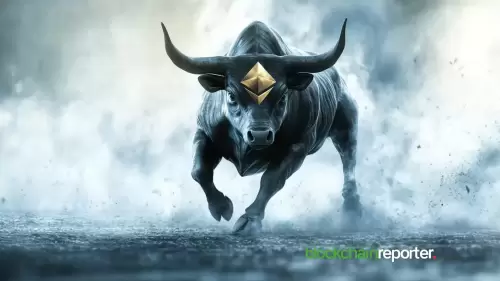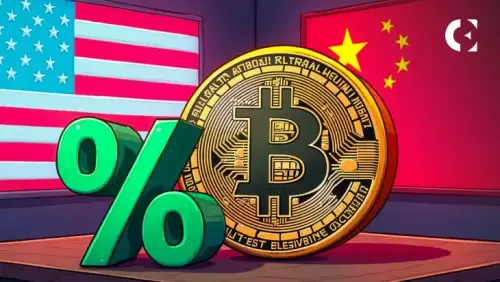 |
|
 |
|
 |
|
 |
|
 |
|
 |
|
 |
|
 |
|
 |
|
 |
|
 |
|
 |
|
 |
|
 |
|
 |
|
Cryptocurrency News Articles
Cryptocurrencies Are Redefining Content Creation and Transforming the Creator Economy
May 13, 2025 at 01:30 pm
In the digital age, content creators are redefining how value is exchanged, and cryptocurrency is at the heart of this transformation.

In the age of the digital creator, the lines of value exchange are blurring, and cryptocurrency is at the heart of this transformation. From YouTubers and podcasters to artists and writers, an increasing number of creators are turning to blockchain technology to achieve financial independence, connect more deeply with their audiences, and realize new monetization models.
Platforms like Exion Edge are at the forefront of this movement, arming creators with the tools they need to navigate this rapidly evolving landscape.
One of the most significant ways crypto empowers creators is by enabling direct, peer-to-peer payments. Traditional platforms like YouTube or Patreon often take substantial cuts—sometimes up to 30%—from creators’ earnings. But cryptocurrencies like Bitcoin, Ethereum, or stablecoins allow fans to tip or subscribe directly to creators, cutting out the middleman.
Platforms like Coil or the Brave Browser integrate crypto payments, rewarding creators instantly with tokens such as XRP or BAT (Basic Attention Token). This direct model ensures creators retain more of their income, fostering financial sustainability.
Moreover, crypto transactions are renowned for being fast and borderless. Creators can monetize their work with a global audience without currency conversion fees or delayed payouts. For creators in developing nations, where access to traditional banking can be limited, crypto wallets provide a seamless way to receive funds, ultimately leveling the playing field.
Crypto also introduces tokenization—a game-changer for creator-fan relationships. Creators can issue their own tokens, digital assets that are intrinsically linked to their brand, allowing fans to invest in the work they love. For instance, a musician could release a token that grants holders early access to new songs, exclusive merchandise, or even a share of royalties from upcoming albums. Platforms like Rally or Mirror are facilitating this new wave of tokenization, fostering a deeper sense of ownership among fans.
In this model, fans become active stakeholders. Those holding a creator’s token are incentivized to promote their work, effectively creating a decentralized marketing network. Additionally, tokenization offers creators a way to crowdfund projects without relying on traditional platforms like Kickstarter, which often impose strict guidelines and high fees.
Centralized platforms like Instagram or TikTok often dictate content policies, may deem videos inappropriate for monetization, and are constantly juggling algorithms. Creators on these platforms are vulnerable to having their income cut off or facing shadow bans. However, decentralized platforms built on blockchain technology, such as Odysee or Theta Network, are offering creators greater control and autonomy. These platforms use crypto to incentivize content sharing and engagement, rewarding viewers and creators with tokens for their activity.
By removing gatekeepers, decentralized platforms ensure creators are not censored or penalized for their content, provided it abides by legal standards. Furthermore, blockchain’s transparency ensures fair compensation. Smart contracts—self-executing agreements coded on the blockchain—are used to distribute earnings according to predefined rules. For instance, a podcast hosted on a decentralized platform could use a smart contract to split revenue among co-hosts, producers, and the platform itself instantly, eliminating the potential for disputes and delays.
Non-fungible tokens (NFTs) have revolutionized how creators monetize digital art, music, and collectibles in the age of the metaverse. Unlike traditional digital files that can be easily copied and devalue the original, NFTs are unique assets, small units of data that are verified and recorded on the blockchain. This integration proves the authenticity of the asset and denotes irrefutable ownership.
As a result of this technology, artists like Beeple have sold NFT artwork for millions of dollars, while even smaller creators can benefit by selling limited-edition content, such as exclusive bundles, NFT tiers of membership, or pieces of their back catalog, directly to fans. NFTs also enable creators to generate recurring revenue through royalties. Creators can embed smart contracts in their NFTs, ensuring they receive a percentage each time the asset is sold on the secondary market.
This model provides long-term financial benefits, unlike one-time sales on traditional marketplaces. For instance, writers can use platforms like Mirror to tokenize their blog posts or essays, transforming written content into unique assets that collectors can buy and trade.
Disclaimer:info@kdj.com
The information provided is not trading advice. kdj.com does not assume any responsibility for any investments made based on the information provided in this article. Cryptocurrencies are highly volatile and it is highly recommended that you invest with caution after thorough research!
If you believe that the content used on this website infringes your copyright, please contact us immediately (info@kdj.com) and we will delete it promptly.
-

-

-

-

-

-

-

-

-

- GD Culture Group (GDC), a Nasdaq-listed holding company focused on livestreaming, e-commerce and artificial intelligence-powered digital human technology, plans to raise up to $300 million for a cryptocurrency treasury reserve.
- May 13, 2025 at 07:55 pm
- In a May 12 statement, GDC and its subsidiary, AI Catalysis, announced entering into a common stock purchase agreement with a British Virgin Islands limited liability company to sell up to $300 million of its common stock.





















![Bitcoin pulls back! Is the opportunity to get on the bus? Ether currency has made a fake breakthrough, and altcoins have plummeted! [It is recommended to watch at 1.5X times faster] Bitcoin pulls back! Is the opportunity to get on the bus? Ether currency has made a fake breakthrough, and altcoins have plummeted! [It is recommended to watch at 1.5X times faster]](/uploads/2025/05/13/cryptocurrencies-news/videos/bitcoin-pulls-opportunity-bus-ether-currency-fake-breakthrough-altcoins-plummeted-recommended-watch-x-times-faster/image_500_375.webp)


































